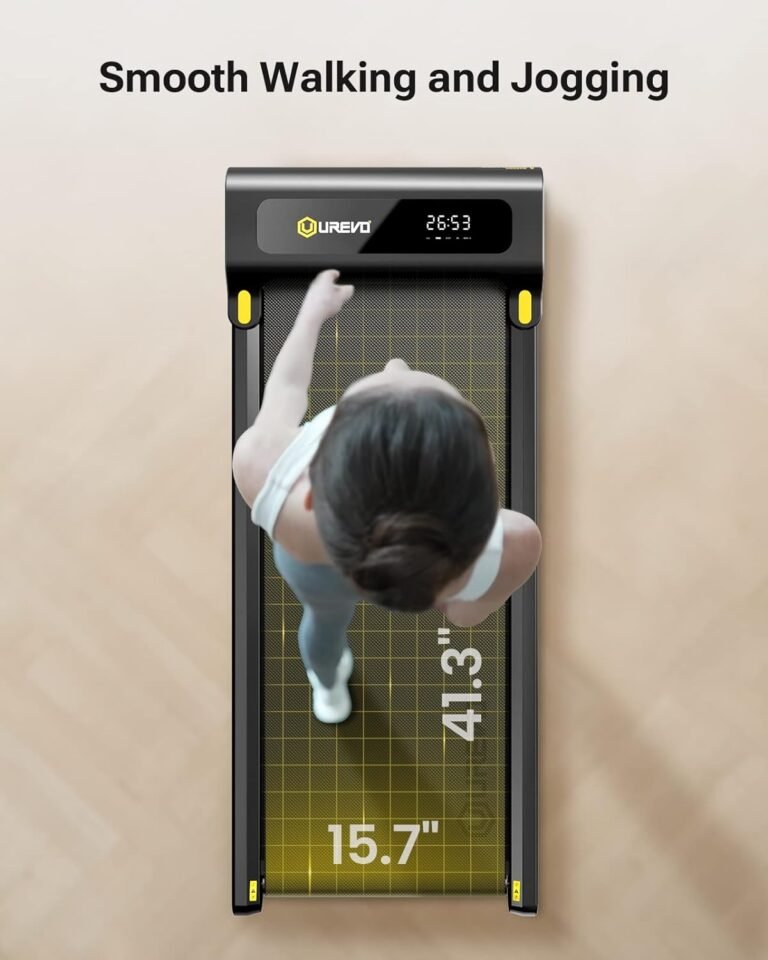Evaluating Fitness Apps: Which Ones Are Worth Your Time?
You've probably noticed the flood of fitness apps available, each promising to revolutionize your workout routine. But how do you separate the truly beneficial ones from the virtual clutter?
By considering key factors like features, user reviews, cost, compatibility, integration, privacy, and security.
It's time to elevate your fitness journey with apps that not only claim to help but actually deliver results.
Key Takeaways
- Choose apps with tailored workouts for your fitness level.
- Prioritize progress tracking and trend analysis features.
- Compare app ratings for user satisfaction and engagement.
- Evaluate subscription plans for value and benefits.
Features to Look for
When choosing a fitness app, prioritize features that align with your specific health and fitness goals. Look for apps that offer customized workouts tailored to your fitness level and objectives. Customized workouts ensure that you're engaging in exercises that are suitable for your current abilities and that gradually challenge you to improve. These tailored routines can help you stay motivated and make progress towards your desired fitness outcomes.
Another essential feature to consider is progress tracking. Opt for apps that allow you to monitor your fitness journey effectively. Progress tracking functionalities enable you to see how far you've come, set new goals, and stay accountable. By keeping a record of your workouts, nutrition, and other health-related data, you can analyze trends, identify areas for improvement, and celebrate your achievements. This feature is crucial for maintaining consistency and making informed decisions about your health and fitness routine. Choose a fitness app that offers robust progress tracking tools to support your wellness journey effectively.
User Reviews and Ratings
When looking at fitness apps, paying attention to the app star ratings, written user comments, and consistency in feedback is crucial. These elements can give you valuable insights into the app's overall performance and user satisfaction levels.
App Star Ratings
Exploring user reviews and ratings can provide valuable insights into the effectiveness and usability of fitness apps. When evaluating app star ratings, pay attention to trends across different platforms and devices. Look for apps with consistently high ratings, as they often indicate user satisfaction and reliability. Consider the number of ratings as well; an app with a large number of positive ratings is likely to be more trustworthy.
Additionally, compare the ratings of competing apps to identify strengths and weaknesses. Some key aspects to focus on include competitor analysis and performance tracking. By analyzing app star ratings in this manner, you can make more informed decisions about which fitness apps are worth your time and investment.
Written User Comments
To gain deeper insights into the effectiveness and usability of fitness apps, shift your focus to analyzing written user comments such as reviews and ratings. User engagement plays a crucial role in determining the success of a fitness app.
By examining user comments, you can gauge how well the app fosters engagement through features like challenges, progress tracking, and interactive elements. Additionally, app design is often a key point of discussion among users. Comments may highlight user-friendly interfaces, intuitive navigation, or areas for improvement.
Community support and motivation rewards are also frequently mentioned in user reviews. These aspects can provide valuable information on how well the app creates a supportive environment and encourages users to stay motivated in their fitness journey.
Consistency in Feedback
Ensuring consistency in user feedback, particularly through reviews and ratings, is paramount in evaluating the overall effectiveness and user satisfaction of fitness apps. Feedback accuracy plays a crucial role in providing potential users with genuine insights into the app's performance and features.
By examining user engagement levels reflected in reviews, you can gauge how well the app resonates with its audience. Additionally, feedback frequency is essential for tracking progress in app updates and improvements. Higher frequency of positive reviews may indicate continuous enhancements, while a lack of recent feedback could suggest stagnant development.
Therefore, paying close attention to the consistency and authenticity of user reviews and ratings can guide you towards selecting a fitness app that aligns with your goals and preferences.
Cost and Subscription Options
When considering fitness apps, it's crucial to weigh the different pricing structures to find the best fit for your budget and needs.
Look out for apps that offer free trials, allowing you to test out the features and see if it aligns with your fitness goals before committing to a subscription.
Understanding the cost and subscription options will help you make an informed decision on which app will provide the most value for your money.
Pricing Structures Comparison
Comparatively, many fitness apps offer a range of pricing structures that cater to different budget and commitment levels. When evaluating fitness apps based on pricing, it's essential to consider the premium benefits and subscription plans offered. To help you make an informed decision, here is a comparison table showcasing the pricing structures of different fitness apps:
| Fitness App | Monthly Price |
|---|---|
| App A | $9.99 |
| App B | $14.99 |
| App C | $19.99 |
Each of these apps provides various subscription plans with differing features and benefits. Understanding the pricing structures and what each app offers can help you choose the one that aligns best with your fitness goals and budget.
Free Trial Availability
Are free trial options available for these fitness apps, and what're the associated costs and subscription choices?
When considering fitness apps, it's crucial to assess the availability of free trials to ensure the app aligns with your fitness goals. Many apps offer free trial periods ranging from a few days to a month, allowing you to test their features and usability before committing to a subscription. Understanding the subscription benefits is equally important; some apps provide access to personalized workout plans, nutrition tracking, and progress monitoring as part of their subscription packages.
Additionally, evaluating app performance during the trial period can help determine if it meets your expectations in terms of user interface, workout variety, and overall effectiveness.
Compatibility With Devices
Enhancing user experience, ensuring compatibility with a wide range of devices is a pivotal feature to consider when selecting fitness apps. Device compatibility not only influences how well the app functions on your device but also impacts its performance. Apps that are regularly updated and have bug fixes contribute to a smoother user experience. When a fitness app is compatible with various devices, it indicates that the developers have put effort into making their product accessible to a broader audience. This compatibility ensures that regardless of the device you use, the app will perform optimally, providing you with accurate data and a seamless experience.
Before committing to a fitness app, check its compatibility with your specific device and operating system. Apps that are optimized for various devices are more likely to run smoothly, reducing the chances of crashes or glitches. Keeping your app updated ensures that you have access to the latest features and improvements, enhancing your overall fitness journey.
Integration With Wearable Tech
To maximize the benefits of your fitness journey, integrating your chosen fitness app with wearable tech can offer real-time data and insights to enhance your overall experience. This integration allows for more accurate tracking of your performance metrics, helping you stay on top of your fitness goals. Here is a comparison table to help you understand the benefits of integrating fitness apps with wearable tech:
| Feature | Fitness App Only | Integration with Wearable Tech |
|---|---|---|
| Data Accuracy | Moderate | High |
| Performance Tracking | Limited | Extensive |
| Real-time Insights | No | Yes |
Privacy and Data Security
Integrating your fitness app with wearable tech not only enhances performance tracking and provides real-time insights but also raises important considerations regarding privacy and data security.
- Data Encryption: Ensure that your fitness app uses robust data encryption methods to protect your personal information. Look for apps that encrypt your data both in transit and at rest to prevent unauthorized access.
- Privacy Policies: Review the app's privacy policies to understand how your data is collected, stored, and used. Pay attention to what information is shared with third parties and whether you have control over sharing settings.
- Tracking and Sharing: Be cautious about the amount of data your fitness app tracks and shares. Opt for apps that allow you to customize the information shared and provide clear options for adjusting privacy settings. Prioritize apps that prioritize user consent and transparency in data sharing practices to maintain control over your personal information.
Conclusion
When evaluating fitness apps, look for features that meet your needs, read user reviews for honest feedback, consider costs and subscription options, ensure compatibility with your devices, check for integration with wearable tech, and prioritize privacy and data security.
By taking these factors into account, you can make an informed decision on which app is worth your time and will help you achieve your fitness goals effectively. Prioritize your health and choose wisely.







